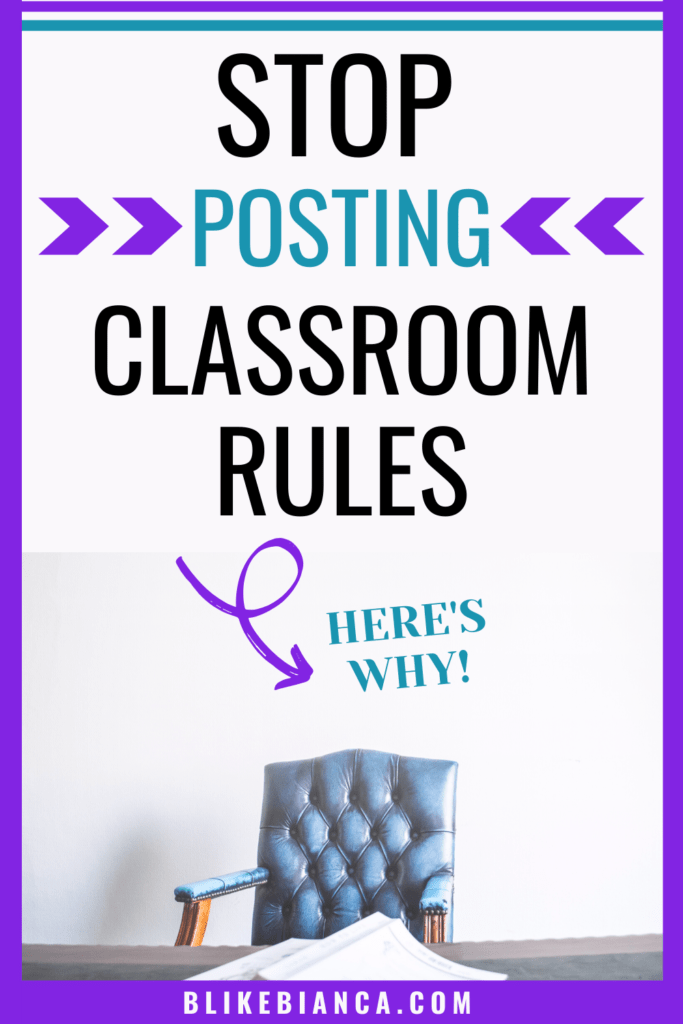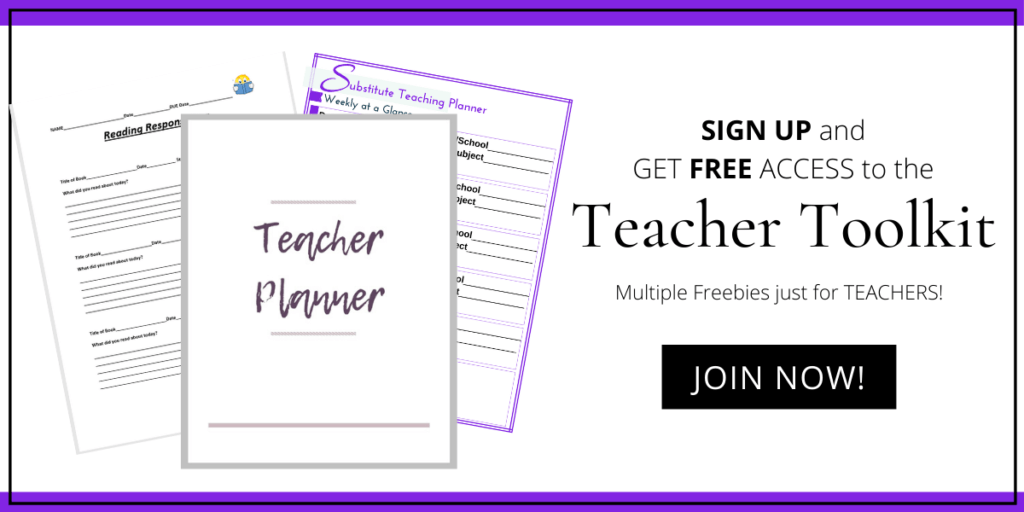In my classroom, I don’t generally follow a list of classroom management rules. I know, I know…a lot of teachers say, “develop your rules with your class!” Then, what do you do next? Post the rules up in the classroom so your students can be reminded of them every day, all year long.
Well, I haven’t done that since my 2nd year of teaching.
There wasn’t any real reason for why I didn’t focus on building my rule list with my class during my 3rd year. I just didn’t get around to it. But during that 3rd year of teaching, I joined the PBIS (Positive Behavioral Intervention and Supports) team in my building. And we looked at a lot of data. In particular, data that showed how many discipline infractions I wrote that entire year school year.
The number? Only 2.
While some teachers had upwards to 20, I taught the social/emotional/behavior students. The students with IEPs, Behavior Intervention Plans, and Functional Behavior Assessments. I had these students for a class period every day all year, since I taught the only social/emotional support class in the school. Generally, one might think that I deal with behavior situations and need to redirect with discipline infractions. But I only wrote 2 discipline infractions all year. So, what was different?
After a bit of reflecting, I knew that it came down to the expectation. That without a list of rules up on the classroom wall, the students still knew the expectation. If the set expectation is that I know that they already know to be a student, then they are ready to learn.
Don’t get me wrong, being a special education teacher is difficult and I have disruptions. I’ve dealt with defiance, and disrespect, and those students that just will not do the schoolwork. But I guarantee that if you ask your student what they should be doing instead of the negative behavior they are doing; they already know answer without a list of rules in front of them.
Here is a list of ways to focus on how to handle classroom behavior with the expectation in mind. Because, depending on how you manage your classroom will depend on how productive your students are, how well-behaved your students when there is a guest teacher, and how easy it is to redirect them when they need intervention.
Simple Strategies to Handle Classroom Behaviors

Off-Task Classroom Behaviors
1. If the entire class is talking or off task during independent instruction, then redirect the class back to whole group direct instruction to scaffold, then give them another opportunity to work independently.
2. If an individual student or small group is off task, then quietly stand near them.
3. Ignore behavior, only if it just one student that seems to be unfocused. They are just craving attention and you give them it to them later with individual time.
4. Silent stare works well during direct instruction. I have students that call this, “the stare of death.” haha
5. For just an individual student, silently sit with them for a just a minute until they get back to what they should be doing.
6. Check to make sure they have appropriate materials, pencil, worksheet, book, etc.
7. Walk the classroom by make the rounds checking in with each student.
8. Individually, assist the student by completing a task by working together to get started. One time I couldn’t a student wouldn’t work on a word search…apparently, he thought he was too cool for word searches. I sat with him and said if he finds a word, I will find a word until it is complete. Next thing I know, he was finding two to three words at a time.
9. Always keep a “quiet space” or refocus table in the room for students that really need independent work spaces.
10. Give a shout out to those following expectations. Students love a shout out and will get on-task when others are being mentioned.
11. Use media…show a video or play music, both always seems to bring the classroom together quietly.
12. Call on a student that is on task and have them repeat the expectation or directions.
13 Use exit directions, always a silent helper when you can just point, and the student will read their next task.
14. Differentiate, by giving choice, or modifications if necessary.
15. Call/Email home but when the behavior is corrected, make sure to send a follow up email.
On-Task Classroom Behaviors
1. Silently go around and tell each student verbal praise.
2. Give students positive recognition items that are tangible.
3. Give 3-5 minutes of surprise free time at the end of class.
4. Positive praise the class, to remind them they are doing well while they are working. Make sure you tell them you are proud of them.
5. Stay consistent, especially with giving free time.
6. Positive notes/emails home works well at any grade level.
The goal for focusing less on discipline and more on the learning environment is for your student to feel successful and ultimately be successful by using skills they learned by you, the teacher.
I do understand that some days in classroom don’t always go how you planned and each day comes with a different experience. If classroom behaviors do get to a breaking point and become stressful. Here are some things you can do:
- Relax and breath – depending on the situation, I will walk away from my teaching spot, and tell my students that I’m going to sit down and wait until they are ready to learn. It usually gets the class silent before I even head to my desk to sit down, but I still follow through.
- Stay silent -you don’t want to say something or make a comment that you will later regret
- Focus on something positive. I know this is extremely difficult when you are frustrated and just need a break or need a student to take a break.
- Stop the class – if you have a reoccurring problem, stop the lesson and have a discussion on how to make things better. A talk that is not structured or formal can get everyone (including the teacher) back on track. I continually ask my students what they want to see from me and from their other teachers to keep them engaged and motivated to learn. It’s easy to ask them instead of trying to figure things out along the way.
- Don’t take it personal– Your students are just kids. This will not help you build relationships with them that are vital to classroom management success.
If you do get to the point where you need to reflect on your own classroom management style, here are some questions to start:
- What type of discipline problems do you most frequently have dealt with in your classroom?
- Are there any students that you may want to work on mending/building your relationship with?
- Think of a few little things that you can start the process of rebuilding a relationship with a student.
- What types of positive behavior interventions do you use in your classroom to discourage common problem behaviors? What interventions do you find most successful? Least successful?
Final Thoughts
Remember to maintain the student expectation does not mean to focus on rules but it does mean to have a positive learning environment for your students. They expect you to lead, in return they are expected to learn.
Let me know what your thoughts are on posting rules below!



Great ideas all in one place. Thank you!
Awesome, thanks for reading!
I love how you have explained the classroom expectations and management. Most students can repeat the “rules” but they may not have the skills needed to follow them in the moment. Punishing them only breaks down the relationship. I love that you are doing more a a parenting style of classroom management. I will keep these things in mind as I begin my 10th year in the resource room of a small rural school
Thank you Nancy!